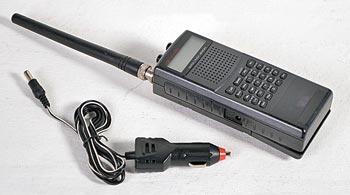 |
|
| Issue #118 • July/August, 2009 |
The first installment of this energy series (Backwoods Home Magazine, September/October 2008) dealt with the fossil fuels which include petroleum, coal, and natural gas. The second installment (Backwoods Home Magazine, November/December 2008) considered nuclear energy, both fission and the elusive promise of contained-fusion. This third installment deals with energy sources that are commonly lumped under the heading of “alternative energy.”
When I started to research the prospects for alternative energy for this installment, I went to various federal, state, and university sites. What I found were grandiose statements that made me believe fixes to America’sand the world’senergy problems were just around the corner, and that there is an immense amount of readily harvestable, inexpensive, and renewable energy right here at our proverbial fingertips. All we have to do is make the sincere and concerted effort to tap into it and, voilà, America is on the road to energy independence.
|
The whole spiel reminded me of the saying in the early days of nuclear that nuclear-generated electricity was going to be “too cheap to meter.” Grand thinking, but as we know now that dream turned out to be far less than what was promised.
The promise of solar
Since the years of the Carter Administration, there have been calls to increase our reliance on renewable resources and back away from the so-called eco-unfriendly sources of energy which include fossil fuels, nuclear, andto somehydropower. A partial list of predictions over the last 3½ decades include:
- A larger and larger percentage of our energy would come from renewables. Didn’t happen.
- Carter’s Administration predicted 20% of our electricity would come from solar by 2002. We haven’t even come close.
- Ralph Nader, consumer advocate and perennial presidential candidate, predicted 100% of our energy would come from solar by 2008. I won’t comment on that.
- Denis Hayes, one-time head of the Solar Energy Research Institute and one of the founders of Earth Day, predicted 50% by 2000.
- The California Energy Commission predicted that state renewables would account for 50 to 60% by 2000.
- Many predicted that by 2000 electricity generated by photovoltaics would be seriously competitive with fossil fuel generated electricity. It hasn’t come close despite tax breaks, subsidies, and the “right” to sell electricity back to the utilities at retail rates.
The problem was that the predictions were not made by scientists and engineers, they were made by politicians, bureaucrats, and movie stars. They were also made by solar advocates who were feeding at the public troughs through tax breaks and subsidies. And when their predictions failed, many of the advocates indulged in conspiracy theories (e.g., solar isn’t failing, Big Oil is blocking it.)
The sales pitches advancing solar power have often been short on science but long on calling for legislation to promote it, legislation that involves both the carrot (tax breaks and incentives) and the stick (legislative mandates), and it still fails to make serious inroads.
The truth is that the percentage of our energy from solar has actually dropped since the first predictions were made some four decades ago. This is despite the fact that solar energy is largely subsidized, while more conventional power sources, such as nuclear and fossil fuel-driven, have been lobbied against and even stifled.
What is alternative energy?
Before talking about “alternative energy,” we should define what it is we’re talking about because not everyone agrees on what the term means. Definitions of alternative energy include energy derived from sources that are:
- renewable, i.e., they do not use up natural resources
- do not “harm” the environment.
|
Usually included in the first part of the definition are solar, wind, hydro, geothermal, tidal, and waves. The problem with the first part of the definition is that fission and fusion power almost fit into it. There is more than enough deuterium in seawater to power fusion reactors until the sun burns out, if fusion can economically be harnessed. (It may be impossible.) And there is enough fissile material, when breeder or thorium-powered reactors are included, that mankind will not run out of them for centuries, if ever. However, fission is excluded from the mix that makes up alternative fuels by environmentalists because they feel it doesn’t fit into the second part of the definition, i.e., doesn’t harm the environment.
A problem with the second part of the definition is that different people have different definitions of what harms the environment. It wasn’t that long ago that hydro and wind were considered eco-friendly. But large-scale hydro floods land (a big no-no to many environmentalists) and windmills create noise, kill birds, and are considered aesthetic blight by many people including the Kennedys.
But I will exclude fusion and nuclear from the current discussion because they were considered in the second installment of this series. So, I’ll take the other sources and call them all “alternative” and discuss some of the promises and problems of each.
What is solar energy?
With the exception of nuclear energy and power from tides, every other energy source ultimately has its origin with the sun. Wind, the growing of biomass, hydro, and even fossil fuels are really just energy from the sunsolar energythat’s been stored in some manner to be released later either by man or Nature herself.
Solar energy is raining down on us relentlessly. More of the sun’s energy is absorbed by the earth’s atmosphere (including clouds), oceans, and land masses in one hour than all the energy used by all of humanity in one year.
The amount of energy annually absorbed by the earth is approximately 1021 joules. That’s a 1 with twenty-one zeros following it. This is roughly 70,000 times as much energy as all the electricity consumed by humanity in a year and about 8,000 times the annual amount of energy in all forms (cars, planes, factories, beasts of burden, heating, etc.) we use. That means there’s an awful lot of it that just returns back, unused, into space as either reflected or as infrared light.
If you think about it, you and I are solar powered since the food we eat to provide the energy we need to go about our daily lives ultimately comes from plants which store the sun’s energy through photosynthesis.
|
If you delve deeper, even nuclear fission, in the end, is a type of solar power in that the heavy elements were all manufactured in exploding stars in other parts of the universe long ago. Only tidal power and fusion power do not ultimately have their origins in some star, somewhere, though the sun’s gravity does figure into the tides.
Solar energy is all around us, so the story goes, and all we have to do is figure out how to use more of it.
There are two ways we can tap solar power directly: photovoltaics, which turn solar energy into electricity, and passive solar which is used primarily to generate heat.
Though they both come directly from the same source, the sun, photovoltaics, and passive solar should be considered separately.
Photovoltaics
Most other power sources must turn a generator to create electricity. This is how fossil fuel plants, nuclear plants, hydro, and others produce electricity. But photovoltaic cells create electricity directly.
A substance with photovoltaic properties is one that when exposed to light produces an electric effect. The term “solar cell” is often used to describe only those photovoltaic cells made to respond to sunlight. In this article, I’ll use the terms “photovoltaic” and “solar cells” interchangeably. (See sidebar, How do solar cells work?)
Once an expensive curiosity, a combination of factors is making photovoltaics less expensive, more efficient, and practicalparticularly for the self-reliant homesteader. This is because the technology for mass-producing the cells continues to make production costs less expensive, but also the science of making photovoltaic cells is making them more efficienti.e., a given solar cell produces more electricity. As the price per unit comes down and the efficiency goes up, you’re getting more bang for your buck.
A second factor is that Congress has mandated tax credits for solar installation, for both photovoltaics and passive solar. This means the money spent on installation can be deducted from your gross income so you pay lower taxes. (This simply means your neighbors are paying part of your electric bill.)
|
A third factor is that Congress has also mandated that people hooked up to the grid, who also produce their own electric power, can sell the excess electricity they produce to the power companies at retail prices. (But first see the sidebar on selling electricity to power company.)
The worldwide demand for solar panels (a panel is an array of solar cells) is still small but it is currently growing at about 50 percent per year and utility companies are looking into the possibility of providing some electricity generated from solar panels made up of thousands of these solar cellswhen it’s practical.
However, though the costs are dropping they won’t fall the way computer chips fell in price, as some contend they will, because what really fell with computer chips was the cost of computing power as the manufacturers figured out how to get more and more transistors etched onto smaller and smaller chips. Modern computer chips are thousands of times more efficient than the earliest ones. But the manufacturers of solar chips aren’t going to figure out how to get thousands of times more sunlight to fall on a chipunless they make the chip thousands of times larger.
On top of that, photovoltaics are not a dependable nor a high-quality source of electricity, and the idea that they will become a major contributor to the national energy picture is a pipe dream.
Howard Hayden
|
While researching this article I discovered a book titled, The Solar Fraud: Why Solar Energy Won’t Run the World, by Howard C. Hayden, Professor Emeritus of Physics, retired from the University of Connecticut. Using mathematics, physics, and economics, he makes a compelling argument against most renwables. I myself have a degree in math and a background in physics and economics, and I found his points convincing.
Hayden points out that to power the nation’s electric grid with solar cells, which are about 10 percent efficient, we would need 15,000 square kilometers of them packed edge-to-edge. This is about the size of the states of Connecticut and Rhode Island combined. And how many solar cells have been manufactured to date? Something on the order of a few square kilometers. So I don’t expect photovoltaics to power the nation, or even replace a conventional power plant, anytime soonif ever.
Photovoltaics have other drawbacks, too. One is that ultraviolet and infrared light from the sun gradually degrade the panels, and weather can damage them. The life cycle of a solar cell is about 25 years, and during that time their efficiency is gradually being degraded.
They also don’t work well in cloudy weather, when the sun is near the horizon, or when they’re covered with dust. And they don’t work at all at night.
But they do have important niche applications, especially when it comes to powering off-grid homes, applications on ranches and farms, and various recreational projects. BHM has published numerous articles on these subjects during the last 20 years, and we’ve listed some in the table accompanying this article.
Passive solar
People don’t stop to think how often they actually use “solar power,” and it’s almost always free when they do. This includes drying your clothes on a clothesline (instead of using an electric or gas dryer), opening the curtains on a sunny winter day to read (instead of turning on a light), or letting the sun warm your house (instead of running your heater).
What’s called passive solar involves tapping the sun’s energy for heat. Greenhouses are passive solar devices that use the sun’s light to create and hold heat. Some people build greenhouses onto their homes not only to grow plants but to take advantage of the heat the greenhouse generates to warm their home.
A wider use of solar energy is to heat water. One of the most common sights today are those solar water heaters you see on commercial and residential roofs. Solar water heaters are becoming more common all around the world.
China is becoming the world’s biggest user of solar energy to heat water, while Israel is the biggest per capita user, as 90 percent of Israeli homes are equipped to make at least some use of it. Of course they aren’t for everybody. Israel is in a good place to take advantage of passive solar, but it is much less effective in places like Alaska and Norway.
There are three types of solar heating: low, medium, and high. Examples of low-temperature heating is that which is used to heat swimming pools, for greenhouses, and space heating homes.
Medium-temperature is exemplified by the equipment used to heat water in homes and offices.
But is installing passive solar for heating, cooling, and producing hot water that cost-effective? In the United States 30 percent of the energy used in commercial buildings is used to heat or cool them while a whopping 50 percent of the energy expended in residential building goes to the same uses.
Both low and medium-temperature solar have applications for the self-reliant individual. A typical medium-temperature collector can save as much as half on the annual cost of heating water for residential use. Cost of an installation can vary, but with tax credits and the reduction in your utility bill, such a system will typically pay for itself in nine years.
|
|
Another good thing about passive solar installations is that they can be often self-installed by home owners, further reducing your costs.
High-temperature collectors are what are required for the generation of electricity, and the higher the temperature that can be attained, the more efficiently electricity can be produced. To increase the temperature, the sun’s rays must be focused either with mirrors or lenses.
An example of a high-temperature collector is what some utility companies envision when they use mirrors or lenses to focus sunlight to heat liquids to high temperatures to turn turbines to generate electricity. There are already Concentrated Solar Power plants generating electricity in the United States, Spain, and Australia with more under construction in this country, Egypt, Algeria, Morocco, Germany, and especially Spain, a country that seems to be embracing large-scale solar electric generating stations.
But don’t expect them to make huge impacts on the grid. According to Hayden, a facility that would produce the power output of a typical 1000-megawatt fossil-fueled plant or nuclear-fueled generating plant would cover roughly 127 square miles. In other words, to generate an equivalent of a conventional plant would require a high-temperature plant that covered an area about 1/10th the size of the state of Rhode Island. Energy plants of this size are not likely to be the cure for our energy ailments. For one thing, the environmental impact would be unacceptable, even to those who are not environmentalists.
By the way, it’s interesting to note that to operate at peak efficiency the mirrors for such a plant would have to be cleaned several times a month. Imagine cleaning 127 square miles of mirrors? High-temperature solar plants are by no means maintenance-free as some advocates claim.
Wind
Wind is driven by the heat from the sun. So, in effect, wind and the energy it contains is really just another manifestation of solar power.
Humanity has used wind power since before recorded history. It’s easy to guess one of its earliest uses, and that was to propel sailing ships. From at least 3500 BC and until the 19th century, if you were out on the ocean you either used sails, oars, or drifted at the mercy of the currents. Until the advent of steam engines, most of the great naval and merchant fleets of history were sail-driven.
The earliest references of wind being used to power mills come from 9th century Arabic writings that cite the use of wind to drive a grain mill. Some 400 years later there would also be references to the use of windmills in China. It was through the Arabs that Europeans were first exposed to windmill technology in the 12th century.
In the late 19th century, windmills were finally hooked up to generators to create electricity. Among the earliest to do it, and perhaps the first, was an American named Charles Brush.
Though less than one percent of the world’s electricity is currently produced by wind, its potential would seem to be enormous. In several European countries it already makes a large contribution to their national energy production. Some 21 percent of the electricity generated in Denmark comes from wind, almost 12 percent in Spain, 9 percent in Portugal, 9 percent in Ireland, and 7 percent in Germany, with lesser amounts in other countries. Today, about two thirds of the electricity derived from wind is produced in Europe.
However, the United States is now first in the world in installed wind power “capacity.” There are over 3,000 wind turbines in California alone. But, after years of being the state with the most capacity, Texas has surpassed them. Utilities in other states are also installing more wind capacity. The Department of Energy calculated that harvested wind power from the winds in Texas, Kansas, and North Dakota could power the entire country or, alternately, offshore wind farms, such as the type proponents are attempting to install off Cape Cod could do the same thing.
Then what’s the problem? There are several. One is that the 3200-plus windmills now operating in California only produce a little more than one percent of the state’s electric power. To generate the power of a typical coal-fed or nuclear power plant, a windmill farm would require about 470 square miles of land, more than a third the area of Rhode Island.
Another problem is that it may be labeled “free” energy, but it’s not cheap and can’t compete with conventional power plants even after it’s been subsidized and given tax breaks. (See “The cost of energy” in the sidebar.)
There are other drawbacks to wind. Wind isn’t constant. It varies not only from hour to hour, but day to day, and season to season. Hayden points out that the amount of energy a windmill produces falls dramatically as the wind speed drops. If the wind diminishes from 10 mph to 9 mph, the 10 percent drop results in a 30 percent drop in energy produced. The “nameplate power of a windmill is the amount of power produced by the highest wind speeds the windmill can tolerate. With 10 mph winds, a windmill rated to tolerate 30 mph winds will generate only four percent of its rated power capacity. And on windless days, it will produce nothing at all. So either wind energy produced on “good” days would have to be stored it’s not likely we can find practical means of storing that much energy or wind power will have to work in concert with other energy sources, meaning that the coal-fired and nuclear plants the wind advocates would like to see go away are going to have to stay.
Windmills have other drawbacks, too.
- They’re certainly not bird-friendly and their whirling propellers have been cited in the deaths of thousands of birds.
- Many people don’t want to live near them because they’re noisy.
- Others view them as eyesores.
Critics feel this last reason is why the Kennedys, among others, have triedsuccessfully, so farto block the erection of a windmill farm in the ocean off Cape Cod even though wind advocates claim they could provide as much as three quarters of the electricity the Cape uses. Without it, advocates say, the electricity will be generated by the coal-fired and nuclear plants Ted Kennedy has opposed.
|
|
Though the Senator says his objections are based on environmental and economic concerns, as well as questions of how the windmills might interfere with coastal navigation, his critics say his is simply a severe case of hypocrisy that comes under the head of NIMBY (Not In My Back Yard).
So, for a variety of factors, not the least of which is that wind power, like solar power, is expensive (see sidebar on The cost of energy), it’s not likely wind power will make significant contributions to the national energy picture. But there may be locations where wind power can be produced economically enough so as to be used as a supplement to the electricity produced by other sources.
However, for the individual living away from the grid, a complementary system of solar and wind power can be of benefit. In the summer, winds tend to be less while the sun tends to be more abundant because of both the longer days and lessened cloud cover. In the winter, there’s less sunlight but more wind. Other complementary systems could include a backup diesel generator. It just depends on how much power you need and what you can afford. And, of course, battery storage is a practical way to store wind energy for use later. But batteries aren’t cheap and eventually wear out, and 15 to 25 percent of the energy you capture in a battery is lost as heat during the charging period.
As with other energy systems the individual can install, if you’re on the grid it’s possible to sell excess electricity derived from wind power to the utility companies and this may help offset the cost of the system. But, if you are on the grid, you may want to balance the cost of installing and maintaining an alternative energy system against a monthly electric bill to see if the alternative system makes economic sense.
Hydro
Hydro power is simply extracting energy from moving water. The energy can be used for many purposes including driving machinery and creating electricity. But, once again, the source of water power is ultimately the sun because it is the sun that causes water to evaporate so it can turn into rain and fall back to earth where some of it can be collected and run through a turbine or a waterwheel.
Hydro is the most successful of the renewable energy resources to date, but it is also the one environmentalists “love to hate” because it floods land and alters the landscape. In fact, under the Clinton Administration it was removed from the list of “renewable” energy sources despite the fact that it has been the most successful and generates more electricity in the United States than all other renewable sources combinedwind, burning biomass, photovoltaics, high-temperature solar, geothermal, tidal, waves, etc.
Waterwheels are old technology that go back to ancient times. The earliest reference comes from the Sumerians, though it isn’t clear what their waterwheels were used for.
By the time of the ancient Greeks, waterwheels were often used in place of muscle for the grinding of grain and other tasks. The Romans also used them for milling grain, cleaning wool, and crushing rock. The ancient Chinese used them for similar tasks.
By the 3rd century there were waterwheels in operation from China to Europe and by the end of the 11th century there were more than 5,000 waterwheels providing power for one type of enterprise or another in southern England alone.
Because so many mills came to depend on waterwheels, the mills and the towns that grew up around them were built where there was free-flowing water year-round.
Tending waterwheels for precise operations became a science, and it remains that way today. But despite centuries of use, it wasn’t until 1759 that someone analyzed the efficiency of waterwheels. In that year, an English engineer, John Smeaton, determined that undershot wheels of his day were, at most, 22 percent efficient. That is, they could, at best, extract 22 percent of the energy from the moving water that powered them. Overshot wheels, on the other hand, were 63 percent efficient.
Smeaton was also the first to build a waterwheel from something other than wood. In 1776 he made the first cast iron waterwheel and, two years later, made the first cast iron gearing for a waterwheel.
However, in the early 1800s a French mathematician, Jean-Victor Poncelet, redesigned the paddles for undershot wheels which tripled their efficiency to 65 percent, about as efficient as the overshot wheels.
Eventually, waterwheels were replaced by water turbines and waterwheels began to slowly disappear from the landscape.
|
But the big leap in waterwheels and turbines came when they were harnessed to electric generators. And with the proliferation of electric motors that could be powered by distant electrical sources, mills and factories did not have to be located close to a power source, but could be cited almost wherever the power lines were extended.
Generators driven by water power were one of civilizations great innovations and today approximately 19 percent of the world’s electricity is generated by hydroelectric power.
Micro-hydro projects are in the realm of independent energy for the homesteader fortunate to have running water on his property. When using hydro to produce electricity, we know the amount of power that you can get from a running stream is a product of the volume of flow and the head. The more flow or volume, the more power that’s going to be available while head is the pressure of the falling water, the vertical distance the water drops, and the greater the head, the more power a given volume of water can provide.
With high head, one of the most efficient ways to generate power is to use a Pelton wheel. The Pelton wheel was invented by Lester Pelton in the 1870s. Pelton wheels can be made huge, weighing tons, or they can be made small, just a few inches in diameter. Small ones should be run with 100 or more feet of head. Greater head also means smaller, more efficient, and less expensive waterwheels or turbines and feeder pipes can be used.
But the inverse is also true: with lower head you need more water to generate useful power, and you’ll need a larger and more costly waterwheel or turbine and feeder pipes to handle the volume.
Either way, the energy a Pelton wheel can extract from moving water is considerable
We also know that the characteristics of the channel or pipe through which the water flows also affects the efficiency of hydro power. The greater the friction (even turbulence) and the less the incline of the channel or feeder pipe, the less energy you can pull out of the water. These are all things you’re going to have to learn if you intend to install hydropower.
But if you do intend to harness hydro, keep in mind that there are state and federal regulations concerning the use of water, even if it’s on your own property. In these days of environmental regulations, penalties for stepping out of line can be staggering. So, before you install hydropower, make sure you’re not in violation of your state’s water laws, federal water laws, the Army Corps of Engineers, or anyone else including the U.S. Fish and Wildlife Service, the Federal Aviation Administration (if a power line will be constructed near an airport), the U.S. Forest Service, and Bureau of Land Management. Hell hath no fury like a bureaucrat scorned. Permits will cost you money, but the fines and any other legal actions against you for flouting the rules are worse.
Hydro is a significant piece of the U.S. energy picture. However, as I said, large hydroelectric dams have become a target of environmentalists for the reasons given earlier. And even micro-hydro projects can result in unintended consequences. For example, with a micro-hydro project on your own land you may create a wetland environment and discover that, though there had not been a wetland there before, now that there is, you lose a certain amount of discretion as to what you can do with your own property. So, consider all the trade-offs before you decide to install one.
Tidal power
Tidal power is another form of hydro power, but instead of using the flow of a river, the power is produced by the action of tides on the ocean. Among its upsides are that tides are more predictable than wind or solar power and it isn’t seasonal.
Tidal power is not a new concept. It was harnessed as far back as Roman times. The remains of what appears to be a mill powered by tidal action, and used to process wheat, have been found in London. The site dates back to the 2nd century AD. By the 19th century there were as many as 300 tide-powered mills in North America and at least another 350 in Europe. But using tides to produce electricity instead of powering a mill is a modern concept that shows some promise.
There are two ways to harness tides to create electric power. One is let the flow of the tide run water through turbines as the tide comes in, then goes out. Prototypes are currently being built in Australia, Italy, England, Norway, and other countries.
Another, older way is to build a barrage, or barrier, that works like a dam. There are only three of this type operating right now. One is in France, one in Russia, and the third is in the Bay of Fundy in Canada. The barrage works just like an ordinary hydroelectric dam in that the water backs up behind the barrage, the same way water is backed up behind a dam on a river, thereby producing a difference in the water levels, or head, and as the water flows from the higher level to the lower level, it runs through turbines. An advantage of a barrage is that the release of the backed-up water, and therefore the generation of electricity, can be controlled, i.e., power can be generated when there’s peak demand and not on the whim of the tide.
Among the problems with tidal power is that there are very few places where it is practical. Given this, the costs of both building and maintaining such systems, plus the likely opposition by environmentalists, they don’t figure to fit prominently into the national energy picture.
Tidal power is not something a self-reliant homesteader living on the seashore is likely to ever harness for himself. And even if you tried, today you are certain to run into environmental roadblocks.
Wave power
Also associated with the ocean, but distinct from tides, is the power that could be derived from harnessing waves.
Waves are the result of wind blowing over the oceans, so they are a by-product of wind power which itself is a product of solar power. There are several methods by which waves can be harnessed to extract their energy, but I can assure you, none that you’ll use yourself.
The earliest attempts to harness waves was in 1890 but the first commercial plant to generate electricity from waves did not come on line until September 2008, with the Aguçadora Wave Park, three miles off the coast of Portugal. The same Scottish company, Pelamis Wave Power, that built the Portuguese system is now looking to install one of the coast of Tillamook, Oregon.
The Pelamis wave generator is an apparatus that has a series of hinged joints. The whole thing floats on the waves. The flexing of the joints drives high-pressure oil through turbines that turn generators that produce the electricity and the electricity is conducted via a cable laying on the seabed to the shore.
There are also plans to install a series of wave-powered generators off the coast of Reedsport, Oregon. They will be built using a different principle: The generators will be installed in buoys and the up and down motion of the buoys will turn the generators.
Other methods by which energy may be extracted from waves include the Wave Dragon, a floating platform with a ramp that funnels waves up the ramp where they spill into a reservoir atop the platform. As the water pours out of the bottom of the reservoir and back into the ocean, it passes through turbines that turn generators and the electricity is sent to shore through a cable on the seabed. A prototype Wave Dragon has been in place off the coast of Denmark since 2003.
And there are yet other schemes proposed for extracting energy from waves. By why the big fuss? Hayden calculates that to produce the energy we could get from a conventional power plant we would have to lock up hundreds, if not thousands of miles of coastline. Neither the shipping industry, recreational boaters, nor environmentalists are likely to tolerate that, especially since there would be so little power in return.
However, it’s been estimated that if “practical” machines for exploiting the energy from deep-water waves were in place, it would be possible to generate more electricity than is currently produced in the world annually. But such a statement begs a definition of “practical” and would have to include costs and environmental impact.
Wave power technology is in its infancy, and may never go anywhere, but expect to hear more about it in the future.
Geothermal
One of the most promising sources of renewable energy is geothermal. The amount of heat below our feet is staggering. There’s enough to run civilization until the end of time. Why? Because geothermal is actually the product of the largest nuclear reactor on the planetthe earth’s core.
Some of the heat comes from when the earth was first formed. But more heat is constantly being created from radioactive elements within the earth that have been decaying over the last 4.6 billion years. As they decay, those elements release more heat which slowly works its way from the planet’s interior to the surface, where it gradually leaks off into space as infrared radiation. This “nuclear” energy is the reason the earth’s core is molten and, as an energy source, it’s essentially limitless. The trick is to intercept the heat and harness it for civilization’s needs.
|
|
The major problems with tapping this energy are locating sites, creating the technology, and initial investment.
As to location, the heat under our feet is everywhere. The problem is drilling deep enough to access it. In some places, adequate heat to run a electricity-generating plant is rather shallow. For example, at Larderello, Italy, where the world’s first geothermal electric plant was built in 1911. The heat there is so accessible that Larderello now accounts for 10 percent of the geothermal electricity produced in the world. About one million Italian households get their electricity from Larderello heat fields.
There are other places in the world where the heat can be tapped from shallow sites, say depths of less than two miles. But the deeper we go, the more problems we have in retrieving the heat and in most places, adequate heat may lie five or more miles down. Though the petroleum industry has drilled to such depths, drilling for oil is fairly straightforward. When drilling that deep for geothermal energy the problem is making holes that are wide enough to accommodate heat extraction.
More so than most, geothermal has a bright future for providing energy to the United States and the rest of the world. However, today we do not have the technology to profitably tap the really deep heat sources. But that isn’t likely to always be the case.
There are other practical geothermal plants besides the one at Larderello in operation now. The world’s largest is right here in the United States. It’s called The Geysers, located north of San Francisco. When it was constructed in 1980, it produced the same amount of electricity as two typical coal-fired or nuclear plants. The problem is that as heat is extracted, a field is depleted and, today, The Geysers produces somewhat less than 40 percent of the electricity it did 30 years agoless than a typical conventional plant, and the geothermal fields at Larderello now produce 30 percent less steam than they did at their peak, in the 1950s.
How long can a geothermal hot spot be used? It depends on how fast the heat energy is extracted. But heat from deep in the mantle is constantly working its way to the surface. The trick will be to eventually let depleted fields lie idle until more heat rises from deeper within the mantle and they are hot, again.
|
Geothermal energy actually has the potential to provide 100 percent of the energy civilization needs into the distant future and has a better chance of producing steady power, day and night, and season to season, than any of the other “renewable” sources of energy, other than hydro.
California has several other geothermal plants besides The Geysers and, though none are as productive as the field at Larderello, overall the state produces three times as much electricity as Larderello and 4½ percent of the state’s electricity is produced geothermally.
The two countries for which geothermal energy is most important are Iceland, where more than a quarter of the country’s electricity in geothermally produced, and the Philippines, where about 20 percent of that country’s electricity is generated by geothermal heat. (The Philippines is actually the world’s largest consumer of geothermal electricity.) There are other countries that tap into this source of energy but, overall, less than one percent of the world’s electricity is currently produced by geothermal heat.
Hawaii has only one geothermal plant, but it produces 20 percent of the Big Island’s electricity and in several other states there are geothermal plants or they are in the developmental stage while around the world almost two dozen countries now have programs to tap geothermal energy, including Third World countries such as Kenya. More countries will tap into this source in the future.
From the individual’s perspective, there isn’t an awful lot of potential for producing your own geothermal electricity, but some people are lucky enough to live in areas where they can tap into the ground’s heat and use it to warm their homes. For example, in Iceland, 87 percent of all homes use geothermal heat to heat their homes.
|
The future of solar
If you take out hydro, which is here and online, and geothermal, which appears to have a bright future, most alternative energy sources will not figure prominently in the national energy picture. But we should not turn our back on them. Solar has its niches, as it always has, especially among self-reliant types and those who live away from the grid.
But we’re simply not going to see solar, in most of its manifestations, as an answer to our nation’s energy needs in the foreseeable future, no matter how much money we throw at it. If they weren’t subsidized, almost all renewable energy sources, except for those used in niche applications, would go away .
Does this mean I believe alternative or renewable energy is a dead end? No. The real answer to our energy problems is to continue to research and improve on technologies (including alternative) that will make us less dependent on foreign sources and keep energy inexpensive. This will most likely involve building more nuclear plants which, after almost 40 years of opposing them, even some environmentalists are beginning to see as “eco-friendly.”


















